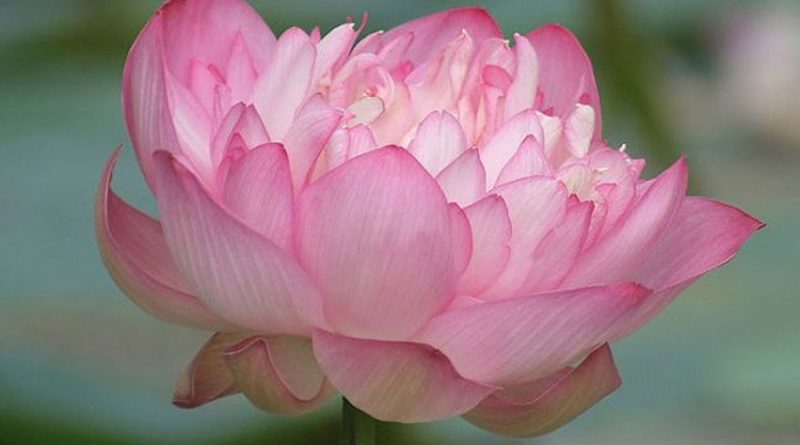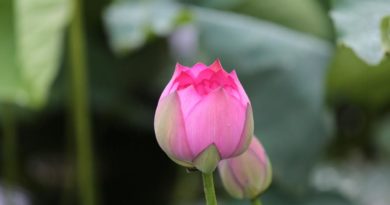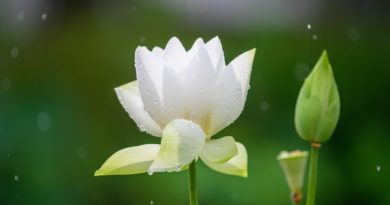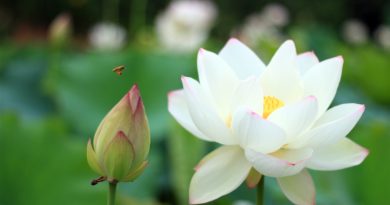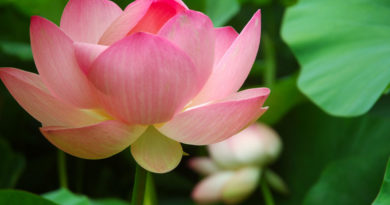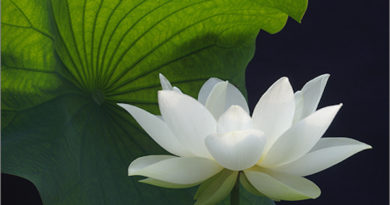Nội Dung Chính
5. MAJJHIMA NIKĀYA
This collection of medium length discourses is made up of one hundred and fifty-two suttas in three books known as paṇṇāsa. The first book, Mūlapaṇṇāsa, deals with the first fifty suttas in five vaggas; the second book, Majjhimapaṇṇāsa consists of the second fifty suttas, also in five vaggas; and the last fifty-two suttas are dealt with in five vaggas of the third book, Uparipaṇṇāsa, which means more than fifty.
The suttas in this nikāya throw much light on the social ideas and institutions of those days, and also provide general information on the economic and political life.
1 Mūlapaṇṇāsa Pāḷi
(a) Mūlapariyāya Vagga
Mūlapariyāya Sutta
The Buddha explained the basis of all phenomena, specifying twenty-four categories such as the four elements (earth, water, fire, wind); sentient beings, devas; the seen, the heard, the thought of, the known; the oneness, the multiplicity, the whole; and the reality of nibbāna. The uninstructed worldling cannot perceive the true nature of these phenomena; only the enlightened ones can see them in true perspective.
Sabbāsava Sutta
In this discourse, mental intoxicants that beset the uninstructed worldling are defined, and seven practices for eradicating them are explained.
Dhammadāyāda Sutta
This sutta contains two separate discourses, the first one given by the Buddha, the second by the Venerable Sāriputta. The Buddha urged the bhikkhus to receive as their legacy from him the bodhipakkhiya dhamma only, and not material things like the four requisites. The Venerable Sāriputta advised the bhikkhus to lead a solitary life for attainment of jhāna and to strive for the attainment of nibbāna by abandoning greed, ill will, and delusion.
Bhayabherava Sutta
This discourse describes how a bhikkhu leading a solitary life in a secluded forest invites harm and danger to himself by his impure thoughts, words and deeds, and how the Buddha had lived a peaceful forest life harmlessly by cultivating pure thoughts, words and deeds which finally led him to enlightenment.
Anaṅgana Sutta
In this discourse given on the request of the Venerable Mahā Moggallāna, the Venerable Sāriputta explained four types of individuals:
(i) an impure person who knows he is impure;
(ii) an impure person who does not know he is impure;
(iii) a pure person who knows his own purity;
(iv) a pure person who does not know his own purity.
Ākaṅkheyya Sutta
This sutta describes how a bhikkhu should develop sīla, samādhi and paññā, instead of craving for gain and fame; how he should restrain his faculties, seeing danger in the slightest fault.
Vattha Sutta
In this discourse the Buddha explained the difference between an impure mind and pure mind by giving the example of a dirty cloth and a clean cloth. Only the clean cloth will absorb dye; so also only the pure mind will retain the Dhamma.
Sallekha Sutta
In this discourse the Buddha explained to Mahā Cunda how wrong views about atta and loka can be removed only by Vipassana insight. The practice of jhāna is not the austerity practice that removes moral defilements; it only leads to a blissful existence. Only refraining from forty-four kinds of bad deeds constitutes austerity practice for removing moral defilements. The volition alone to do a good deed is enough to produce a good result; when it is accompanied by the actual deed, the beneficial result accruing is immeasurable. One immersed in the mire of sensuous impurities cannot rescue others immersed likewise in the mire.
Sammādiṭṭhi Sutta
This discourse is an exposition on the right view, delivered by the Venerable Sāriputta at Sāvatthi. When physical, verbal and mental actions are motivated by greed, hatred and delusion, they are deemed to be bad. When they arise through non-greed, non-hatred and non-delusion, the actions are deemed to be good. Right View is understanding what a good deed is and what a bad deed is; it is the full comprehension of the Four Noble Truths and not holding on to eternity views concerning atta.
Mahāsatipaṭṭhāna Sutta
This discourse, given at Kammāsadhamma market town, is the most important sutta which gives practical guidance for cultivation of mindfulness. It describes the four methods of steadfast mindfulness, namely, contemplating the body, contemplating sensation, contemplating the mind, and contemplating the dhamma as the only way for the purification of beings, for the overcoming of sorrow and lamentation, for the complete destruction of pain and distress, for the attainment of the noble magga, and for the realization of nibbāna.
This sutta appears in identical form in the Dīgha Nikāya.
(b) Sīhanāda Vagga
Cūḷasīhanāda Sutta
In this discourse, given at Sāvatthi, the Buddha made the bold statement that the four categories of ariyas, namely the stream-winner, the once-returner, the non-returner and the arahat exist only in his teaching and not in any other.
Mahāsīhanāda Sutta
In this discourse, given at Vesāli, the Venerable Sāriputta reported to the Buddha about the disparagement of the Buddha’s virtues made by Sunakkhatta who had left the teaching. The Buddha said that Sunakkhatta was not intellectually equipped to have the faintest glimpse of the Buddha’s virtues such as the ten strengths, the four kinds of supreme self-confidence, and the non-decline of sabbaññuta ñāṇa till the time of parinibbāna. He then described the five destinations and the actions which lead to them as well as the wrong beliefs and practices of the naked ascetics to whose camp Sunakkhatta now belonged.
Mahādukkhakkhandha Sutta
This discourse was given at Sāvatthi to refute the naked ascetics when they tried to make out that they followed the same path and taught the same Dhamma as the Buddha. The Buddha also explained to the bhikkhus what the pleasures of the senses were, what their faults and dangers were, and the way of escape from them. The Buddha explained further that outside of his teaching, these dhammas were not known and no one but the Buddha and his disciples could teach such dhammas.
Cūḷadukkhakkhandha Sutta
This discourse was given by the Buddha at Kapilavatthu to the Sakyan Prince Mahānāma, to explain to him at his request how greed, ill-will and ignorance cause moral defilements and suffering.
Anumāna Sutta
This discourse was given by the Venerable Mahā Moggallāna to many bhikkhus at Susumāragiri in the country of Bhagga. They were urged to see if they had purged themselves of sixteen kinds of stubbornness such as inordinate desire, humiliating others while praising oneself, wrathfulness, etc. If these sixteen kinds of unwholesome dhammaswere detected in oneself, a determined effort should be made to get rid of them.
Cetokhila Sutta
This discourse, given by the Buddha at Sāvatthi, mentions the five kinds of mental thorns: doubt about the Buddha, doubt about the Dhamma, doubt about the Sangha, doubt about the efficacy of the practice in sīla, samādhi and paññā, ill-will and animosity towards fellow bhikkhus. It also mentions the five fetters: attachment to sensual desires, attachment to oneself, attachment to material objects, immoderation in eating and sleeping, and adopting the holy life with the limited objective of attaining only blissful existences. These mental thorns and fetters are obstacles to liberation from dukkha. They should be removed and eradicated for realization of nibbāna.
Vanapattha Sutta
This discourse, given at Sāvatthi, is concerned with the choice of a suitable place for a bhikkhu. A bhikkhu has to depend on a forest glade or a village or a town or an individual for his residence and support. If he finds out any particular place is not satisfactory for his spiritual development or for material support, he should abandon that place at once.
If he finds it satisfactory with respect to material support, but not beneficial for spiritual development, he should abandon that place, too. But when it proves beneficial for spiritual development, even if the material support is meagre, the bhikkhu should stay on in that place. When conditions are satisfactory both for spiritual development and material support, he should live in such a place for the whole of his life.
Madhupiṇḍika Sutta
A Sakyan Prince, named Daṇḍapāṇi, once asked the Buddha at Kapilavatthu what doctrine he taught. The Buddha replied that his doctrine was one which could not be grasped by any brahmin nor by māra. It is this: not to live in discord with any one in the world; not to be obsessed by sense impressions (saññā); not to be troubled by doubts; and not to crave for any form of existence.
Dvedāvitakka Sutta
This discourse was given by the Buddha at Sāvatthi to explain two kinds of thinking: wholesome and unwholesome. Bhikkhus should practise to see the advantages of engaging in wholesome thoughts and the dangers of unwholesome thoughts.
Vitakkasaṇṭhāna Sutta
This discourse was given by the Buddha at Sāvatthi on how to combat the arising of unwholesome thoughts with wholesome thoughts. For example, greed and sensuous thoughts should be banished by contemplating on unpleasant and impermanent nature of the object of desire; ill-will and hatred must be countered by thoughts of loving-kindness; and ignorance may be overcome by seeking illumination and guidance from the teacher.
(c) Opamma Vagga
Kakacūpama Sutta
This discourse was given by the Buddha at Sāvatthi in connection with bhikkhu Moḷiyaphagguna, who was friendly with bhikkhunis. When others censured him for being too friendly with bhikkhunis, he lost his temper and broke into a quarrel with the bhikkhus who criticized him.
When the Buddha admonished and advised him to keep away from bhikkhunis and to control his temper, he remained recalcitrant. The Buddha showed the harmfulness of ill-temper and advised other bhikkhus to keep tight check on their temper, not losing it even when someone was sawing their limbs into bits.
Alagaddūpama Sutta
This discourse was given by the Buddha at Sāvatthi. Bhikkhu Ariṭṭha misunderstood the Buddha’s teaching and maintained that the Buddha showed how to enjoy sensuous pleasure without jeopardizing one’s progress on the path. When the Buddha remonstrated with him for his wrong views he remained unrepentant.
The Buddha then spoke to the bhikkhus on the wrong way and the right way of learning the Dhamma, giving the simile of a snake catcher, and the simile of the raft.
Vammika Sutta
This discourse was given by the Buddha at Sāvatthi. Venerable Kumārakassapa was asked by a deva a set of fifteen questions which he brought to the Buddha for elucidation. The Buddha explained to him the meaning of the questions and assisted him in their solution.
Rathavinīta Sutta
This sutta recounts the dialogue between the Venerable Sāriputta and the Venerable Puṇṇa at Sāvatthi on the seven stages of purity, such as purity of sīla, purity of mind, purity of view etc., that must be passed before attaining nibbāna.
Nivāpa Sutta
This discourse was given by the Buddha at Sāvatthi on the snares that waylay bhikkhus on their path, making use of the simile of the hunter, the hunter’s followers, the green pasture and four different herds of deer. The hunter was likened to māra, the hunter’s crowd to māra’sfollowers, the green pasture he had set up to the sensuous pleasures, and four different herds of deer to four different types of recluses who left homelife.
Pāsarāsi Sutta
This sutta given by the Buddha at Sāvatthi is also known by the name of Ariyapariyesanā Sutta. The Buddha recounted his life from the time he was born in the human world as the son of King Suddhodana until the moment of the great “Discourse on the Turning of the Wheel of Dhamma”, giving details of his renunciation, initial wrong practices of severe asceticism and final discovery of the Noble Path of Eight Constituents. In particular, stress was laid on two different types of quests, the noble and the ignoble. He explained that it is extremely unwise to go after sensual pleasures which subject one to ageing, disease and death. The most noble quest is to seek out that which will liberate one from ageing, disease and death.
Cūḷahatthipadopama Sutta
This sutta was given by the Buddha at Sāvatthi. The brahmin Jāṇussoṇi asked the wandering ascetic Pilotika, who had just come back from the Buddha, whether he knew all the virtues and accomplishments of the Buddha. The wandering ascetic replied that only a Buddha who could match another Buddha in attainments could know all the virtues of the other. As for him, he could only exercise his imagination in this respect, just as a hunter would judge the measurements of an elephant from the size of its footprints.
Later when the brahmin Jāṇussoṇi went to see the Buddha and recounted his conversation with the wandering ascetic, the Buddha told him that the size of an elephant’s footprint might still be misleading. Only when one followed the footprints and could see the animal grazing in the open, could one accurately judge its true measurements. So also one could fully appreciate and understand the virtues of the Buddha and his teaching only when one followed his teaching and practised as he taught until the final goal of arahatship was reached.
Mahāhatthipadopama Sutta
This discourse was given by the Venerable Sāriputta to the bhikkhus at Sāvatthi using the simile of the elephant’s footprint. He explained that just as the footprint of all animals could be contained within the footprint of an elephant, all wholesome dhammas are comprised in the Four Noble Truths.
Mahāsāropama Sutta
This discourse was given by the Buddha at Rājagaha in connection with Devadatta, who remained contented with gain and fame because of his attainment of supernormal powers and left the teaching to cause a schism in the order. The Buddha said that this teaching was not for the purpose of gain and fame, which were like the external shoots and branches of a tree; nor just for the accomplishment in sīla, which may be likened to the outer crust of a tree; nor for mere establishing of concentration to achieve supernormal powers, which were like the bark of a tree. The Dhamma was taught for the attainment of arahatship, the noble liberation, which alone resembled the inner pith of a tree.
Cūḷasāropama Sutta
This discourse was given by the Buddha at Sāvatthi in connection with the Brahmin Pingalakoccha who asked the Buddha whether all the six teachers claiming to be Buddhas were really enlightened. The Buddha explained the brahmacariya practice taught by a Buddha led to arahatship, not just to the achievement of gain and fame or supernormal powers. §
(d) Mahāyamaka Vagga
Cūḷagosiṅga Sutta
The Venerable Anuruddha, the Venerable Nandiya and the Venerable Kimbila were staying in the Gosiṅga Sal tree woodland. The Buddha visited them and praised them on their way of living, practising the holy life with perfect harmony and concord amongst themselves, thus forming an adornment to the lovely woodland park.
Mahāgosiṅga Sutta
Once, while the Buddha was residing in the Gosiṅga Sal tree woodland, the Venerable Sāriputta asked the Buddha: “Who would most adorn this woodland park and enhance its beauty?” The discourse records the different answers provided by the Venerables Revata, Anuruddha, Mahā Kassapa, Mahā Moggallāna, Sāriputta and by the Buddha himself.
Mahāgopālaka Sutta
This discourse, given by the Buddha at Sāvatthi, explains the conditions under which the teaching would grow and prosper and the conditions under which it would decline and decay. The example of a cowherd is given. When a cowherd is equipped with eleven skills of managing and tending his cattle there is progress and growth in his work. So also when the bhikkhu is skilled and accomplished in eleven factors such as knowledge of truth about the khandhas, practice of sīla, samādhi and paññā etc., the teaching will grow and prosper.
Cūḷagopālaka Sutta
This discourse deals with eleven factors, the failure to fulfil which would contribute to the downfall and ruin of the teaching. Just as the cattle under the care of an unwise and unskillful cowherd cross the river from a wrong quay on the bank and meet with destruction instead of reaching the other shore, so also the followers of the teachers who are not accomplished in the knowledge of truth, khandhas, etc., will only end up in disaster.
Cūḷasaccaka Sutta
This discourse, given at Vesāli, gives an account of the debate between the Buddha and Saccaka, the wandering ascetic, on the subjects of atta. Saccaka maintained the rūpa, vedanā, saññā, saṅkhāra and viññāṇa were one’s atta. It was atta which enjoyed the fruits of good deeds and suffered the consequences of bad deeds. The Buddha refuted his theory, pointing out that none of the khandhas was atta, each being subjected to the laws of anicca, dukkha and anattā, and not amenable to anyone’s control. Saccaka had to admit his defeat in the presence of his followers.
Mahāsaccaka Sutta
The same Saccaka, the wandering ascetic, came again to the Buddha the next day and asked about the cultivation of mind and body. He knew only the wrong methods of developing concentration. The Buddha explained to Saccaka the various practices he himself had followed and mistakes he had made until he found the middle path that finally led him to the realization of nibbāna.
Cūḷataṇhāsaṅkhaya Sutta
On enquiry by the king of devas how a disciple of the Buddha trained himself to realize nibbāna, the Buddha gave him a short description of how a householder, after leaving his home, put himself on a course of training that gradually purified his mind of all moral defilements and led him to the final goal.
Mahātaṇhāsaṅkhaya Sutta
A disciple of the Buddha, Sāti by name, held the view that the Buddha taught: “The same consciousness transmigrates and wanders about.” Other disciples tried to rid him of this wrong view but to no avail. The Buddha told him that he never taught such wrong views. He only taught: “Consciousness arises out of conditions; there is no arising of consciousness without conditions.”
Mahā-assapura Sutta
The people of Assapura, a market town of Aṅga country, were ardently devoted to the Buddha, the Dhamma and the Sangha, helping and assisting the members of the order by offering them the bhikkhu requisites. Out of gratitude for such support, the Buddha urged the bhikkhus to make strenuous efforts in their training and practice of Dhamma, gradually going from stage to stage, starting with avoidance of evil deeds by restraint of physical and vocal actions, proceeding with mental restraint through meditation, then progressing towards attainment of four stages of jhāna, and finally reaching the stage where all moral defilements are eliminated and nibbāna attained.
Cūḷa-assapura Sutta
Out of gratitude for the support given by the lay devotees of Assapura, a market town in the country of Aṅga, the Buddha urged the bhikkhus to be worthy of the name of samaṇa and brāhmaṇa. Samaṇa means one who has stilled his passions; brāhmaṇa, one who has rid himself of defilements. A bhikkhu should therefore subject himself to the course of discipline and practice as laid down by the Buddha until he has eliminated the twelve defilements such as envy, ill-will, deceit, wrong views etc. §
(e) Cūḷayamaka Vagga
Sāleyyaka Sutta
This exposition was given to villagers of Sālā on ten demeritorious deeds that would lead to states of misery and woe and ten meritorious deeds that would give rise to rebirth in happy realms.
Verañjaka Sutta
This discourse was given to the householders of Verañjā dealing with identical subjects as in the Sāleyyaka Sutta.
Mahāvedalla Sutta
The Venerable Mahākoṭṭhika asked many questions to the Venerable Sāriputta at Sāvatthi regarding an uninstructed person with no paññā, and instructed persons with paññā; many questions in viññāṇa and vedanā, on the difference between paññā and viññāṇa, and many other things. The Venerable Sāriputta obliged him with detailed answers.
Cūḷavedalla Sutta
Therī Dhammadinnā was asked many questions by the householder Visākhā about personality (sakkāya), the origin of sakkāya, the cessation of sakkāya and the way leading to the cessation of sakkāya. All the questions were satisfactorily answered by the Therī.
Cūḷadhammasamādāna Sutta
This sutta describes four practices involving: (i) happy living now, followed by dire consequences in the future; (ii) unhappy living now, followed by dire consequences in the future; (iii) unhappy living now, followed by a happy life in the future; (iv) happy living now, followed by a happy life in the future.
Mahādhammasamādāna Sutta
In this discourse, the four practices as described in Cuḷadhammasamādāna Sutta are explained with more details giving similes of poisoned fruit juice, delicious cordial and medicinal preparation of cow’s urine.
Vīmaṃsaka Sutta
Any claim to Buddhahood may be put to acid tests as provided in this sutta. A detailed procedure to scrutinize such a claim is laid down here.
Kosambiya Sutta
This discourse on how loving-kindness should be the basis of their relations was given by the Buddha to the bhikkhus of Kosambī, who were living in discord because of disagreement over trifling matters.
Brahmanimantanika Sutta
The Brahmā Baka held the wrong view of eternity believing in permanence, stability, and endurance. The Buddha showed him how wrong his belief was.
Māratajjanīya Sutta
This is an account given by the Venerable Mahā Moggallāna of how māra once troubled him by causing pains and aches in the stomach. He had to coax him to stop annoying him by telling him that he had been māra’s uncle at the time of Kakusandha Buddha.
———
Copyright Vipassana Research Institute – Source: https://www.tipitaka.org/eot#4
TẢI MOBILE APP PHẬT GIÁO THERAVĀDA ĐỂ XEM THÊM NHIỀU THÔNG TIN HỮU ÍCH (ANDROID & IOS)

